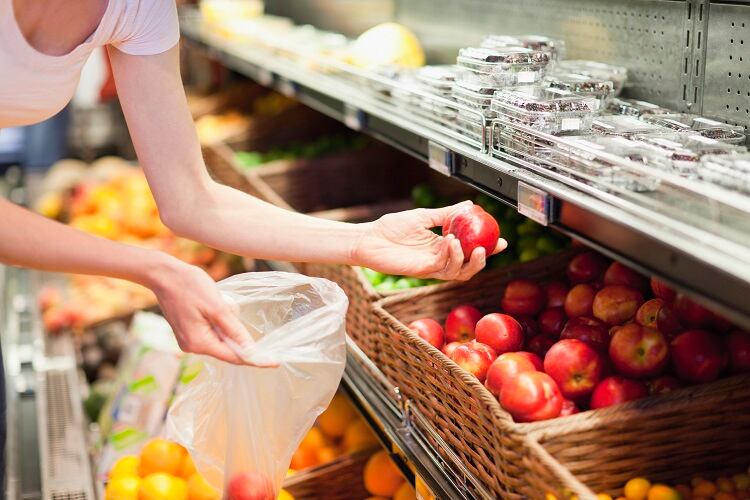Plastic waste is a global concern.
Just 31% of all plastic waste is currently recycled. And every year, a whopping eight million tonnes – representing 3% of global annual plastics waste – enter the oceans.
At the same time, one-third of all food produced for human consumption globally results in food waste or loss per year.
All of these issues can be addressed, at least in part, by packaging design. And more specifically, according to Spain-based Professor Jose Lagaron, by organic recycling.
Food safety without microplastics
Prof Lagaron, who is Group Leader and Founder of the Novel Materials and Nanotechnology group at the Institute of Agrochemistry and Food Technology (IATA) and the Spanish Council for Scientific Research (CSIS), comes at the issue with a focus on the circular bioeconomy.
Food packaging has traditionally been designed to protect and preserve food in all its forms. However, it is now recognised that current packaging solutions are typically used between 15 minutes and 6 months. They have a ‘very short shelf-life’, the professor told delegates at a recent European Food Forum (EFF) event.
“It is well known that plastics are now accumulating in the environment and they can accumulate as microscopic items and even more problematically in the form of microplastic. When they break down, they do not biodegrade, in the sense that they are transformed into carbon dioxide, water, or compost with no ecotoxity.
“But, in fact, they are just made smaller, and the chemicals are still there… and eventually what happens is that they end up in our diet. This is a major issue.”
Of the three approaches to creating a circular economy in packaging – mechanical recycling, chemical recycling, and organic recycling – Prof Lagaron is backing the latter. And with two teams of researchers, is working to develop a range of scalable solutions for industry.
Achieving a biocircular economy
In packaging, organic recycling means valorising waste into products that can later be biodegraded back into the soil.
Prof Lagaron favours this approach above mechanical recycling (which is widely used today) and chemical recycling, he explained.
Mechanical recycling reuses packaging materials to create new products. In principal, this approach should work, the professor explained, if it weren’t for the fact that plastics are chemically inert at room temperature (meaning it doesn’t react with other substances or decay) but begin to degrade when heated.
“When you reprocess them, when you heat them up, they begin to degrade,” explained the researcher. “So how can we guarantee that it has not been reprocessed so many times that it is actually generating a food safety concern?”
For the professor, mechanical recycling has a place in industry. But ‘it does not address sustainability’ and it “does not address [the fact that] part of the packaging is sent out into the environment where it will stay forever, [or] at least throughout our lifetimes”.
Another strategy, chemical recycling, breaks down plastic waste into petrochemical feedstock, which can then be reused for new virgin-quality polymers.
“That would be a solution that resolves this issue of potential biodegradation continuously occurring during mechanical recycling strategies, but it still does not solve the problem of what happens when some of that packaging goes out of the recycling scheme,” he said, hinting at their long lifespan once in the environment.
Prof Lagaron believes his groups’ solution is, on the other hand, ‘definitive’. It upcycles agri-food industry by-products, converts it into packaging products, in a way that can be later degraded back into the soil.
From field to fork to… field
The European Union is also backing this solution, having invested in research products designed to create organic recyclable solutions for industry: YPACK and Usable Packaging BBI. Prof Lagaron is coordinating both projects.
“Our efforts have been dedicating to making sure that [our] packaging materials will be able to degrade in soil, in home composting and in the environment – even in the sea,” he explained.
“When we can guarantee this, I would say we can agree on a solution [that aligns with] the circular bioeconomy: we start from waste, we valorise it into products, and the via bio-organic recycling, we bring them back into carbon dioxide, water, and compost. Or they can also be reduced as a feedstock for the production of new packaging.”
Prof Lagaron is convinced biodegradable and compostable packaging materials can be produced at industrial scale.
For instance, the YPACK project has proven the production of phytons of a packaging material in the form of trays and films. The film is flexible, compostable and monolayered with a high barrier.
“They actually have the same properties as the materials that we are trying to replace – petroleum-derived plastics,” we were told.
“Our intention is not only to create materials that can be used as packaging, but also that can substitute the existing materials, because they provide the same properties that are demanded.
“Of course, this means that we need to interact with the full packaging chain in order to secure positive lifecycle analyses…”
In another EU-funded project, Usable Packaging BBI, the team has been trying to create bottles and other packaging formats to demonstrate that the ‘full family’ of packaging products on the market today can be reproduced sustainably.
Under this project, Prof Lagaron has overseen the development of reusable plates that can be washed more than 125 times. At its end of life, the plate can be buried in soil via either home or industrial composting systems, where to is exposed to ‘microorganisms of moisture’ and completely biodegraded.
Another example developed by the cohort is a biodegradable film that can be thermosealed and used for frozen foods, amongst other applications. “It shows the performance that is required by all of these applications and can match the properties demanded by the market,” he said.
The take-home message? “Organic recycling, which means that we start from waste…and bring it back to the soil, is a feasible strategy…
“It is the most sustainable solution for the future.”


